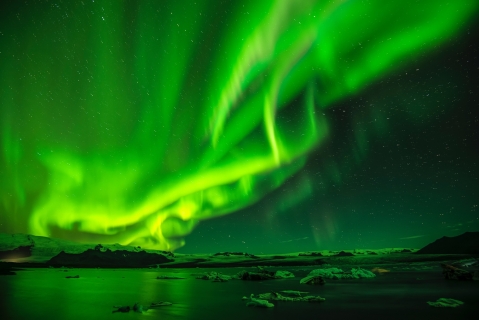Jokulsarlon Glacial Lagoon Weather and Climate: A Comprehensive Guide
The temperature in Jokulsarlon Glacial Lagoon varies moderately throughout the year.
The temperatures shift from cold
to cold.
It also has a notably wet climate with much precipitation.
Let's now guide you through the climate details for a complete overview.
Average maximum day and minimum night temperature
The weather in Jokulsarlon Glacial Lagoon changes moderately throughout the year, offering enough variation to appreciate each season. Average maximum daytime temperatures range from a chilly 10°C in July, the warmest time of the year, to a chilly 2°C during cooler months like February.
At night, temperatures typically drop to an average of around -3°C during these months. Check out our detailed temperature page for more information.Temperature ranges by month
Precipitation and rainy days
Jokulsarlon Glacial Lagoon has a relatively rain/snowy climate with high precipitation levels, averaging 2848 mm of rain/snowfall annually. While rainfall varies throughout the year, each season offers its own charm. September brings wetter days averaging 304 mm of precipitation, spread over 17 rainy days. In contrast, May experiences a drier climate, with about 144 mm of rainfall spread across 16 rainy days.The mean monthly precipitation over the year, including rain, hail and snow
Sunshine over the year
Seasonal changes in sunshine hours are quite dramatic in Jokulsarlon Glacial Lagoon. While May receives considerable daily sunshine with up to 5.7 hours, December marks the darkest time of the year, where sunshine is scarce with only 0.6 hours of sunlight per day. Visit our detailed sunshine hours page for more information.Monthly hours of sunshine
Daily hours of sunshine
overcast and heavy rain overcast and heavy rain overcast and snowForecast for Jokulsarlon Glacial Lagoon
Select a Month of Interest
Check the conditions for any month of the year.
The best time of year to visit Jokulsarlon Glacial Lagoon in Iceland
The average rainfall figures in Jokulsarlon Glacial Lagoon are quite high. Throughout the year, you have a chance of prolonged precipitation. So no matter what time of year you go, you will always have to deal with a high number of rainy days. This makes it more challenging to point out the best time of year to visit. If we needed to pick one month we would choose May which is the sunniest month of the year.Other facts from our historical weather data:
The coldest season / winter is in the following months: January, February, March and December.
July has an average maximum temperature of 10°C and is the warmest month of the year.
The coldest month is February with an average maximum temperature of 2°C.
September tops the wettest month list with 304 mm of rainfall.
May is the driest month with 144 mm of precipitation.
May is the sunniest month with an average of 172 hours of sunshine.
No idea where to travel to this year? We have a tool that recommends destinations based on your ideal conditions. Find out where to go with our weather planner.




